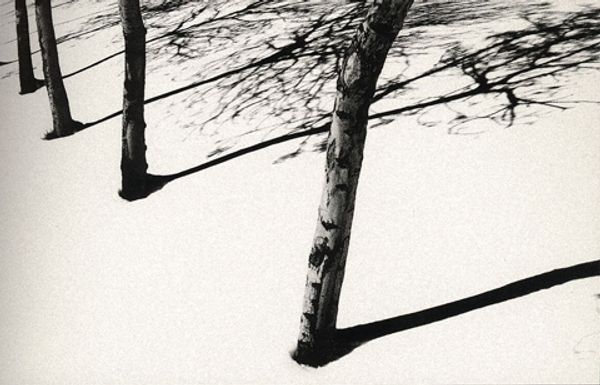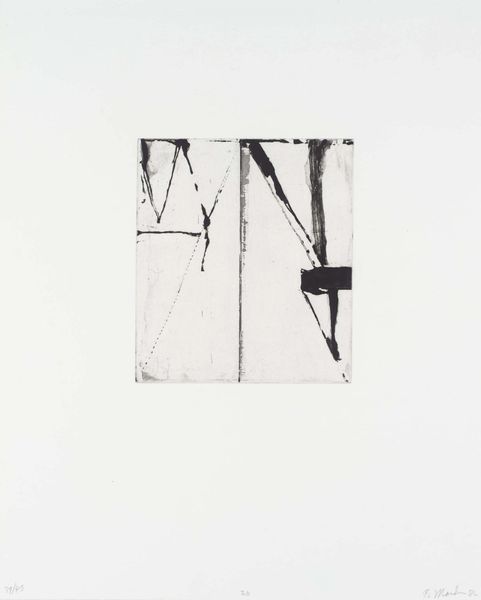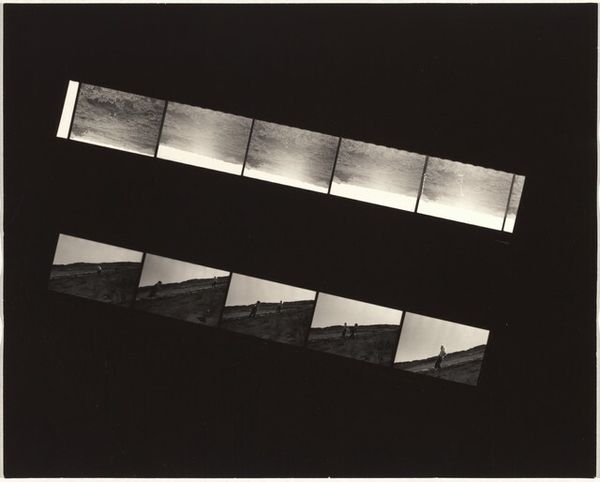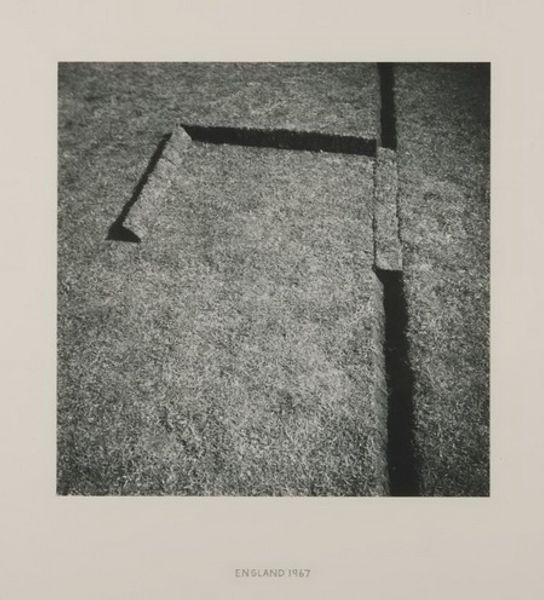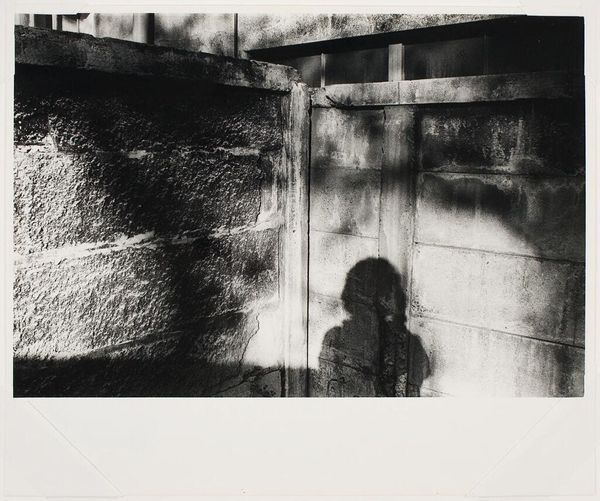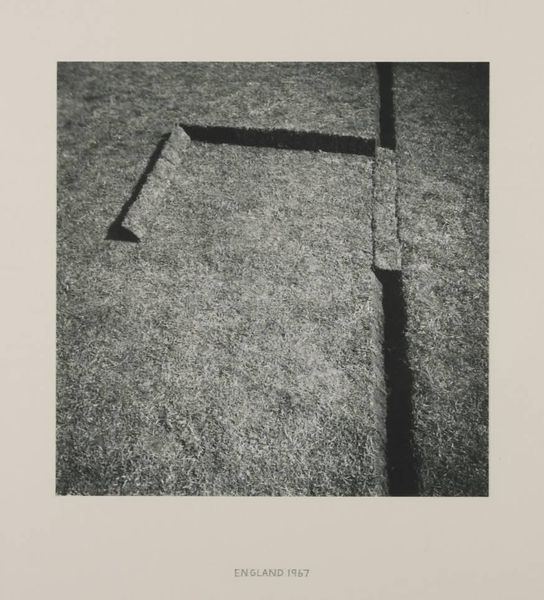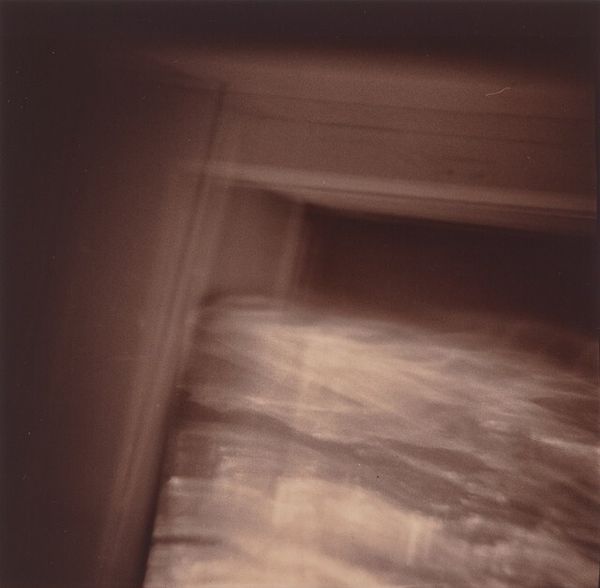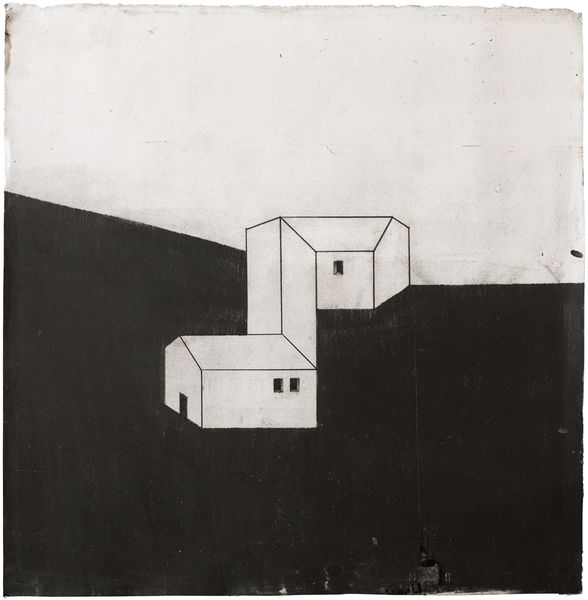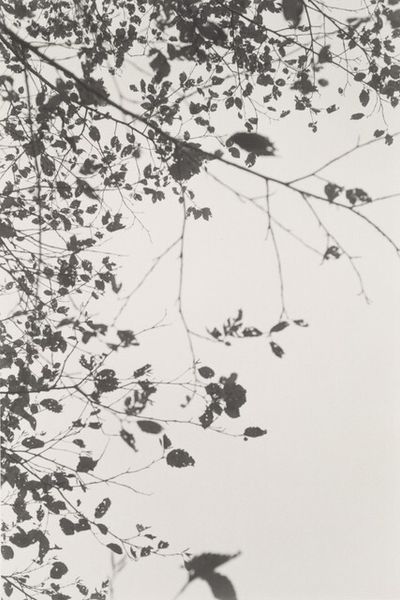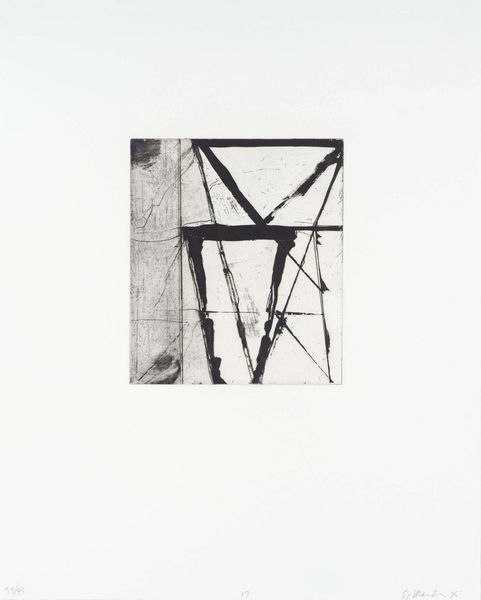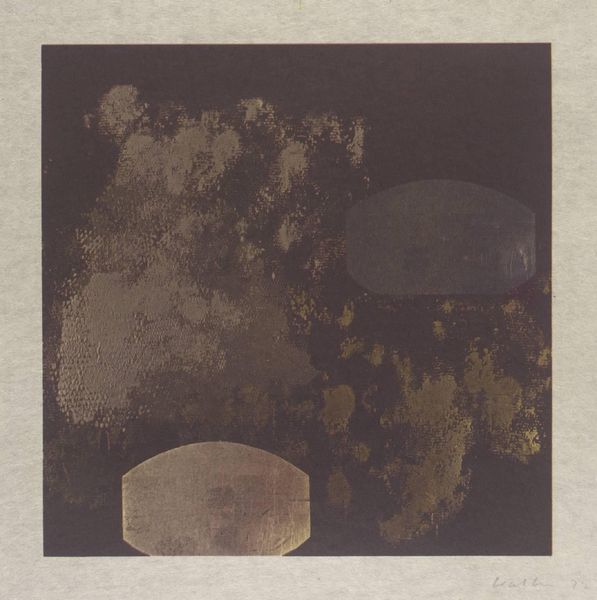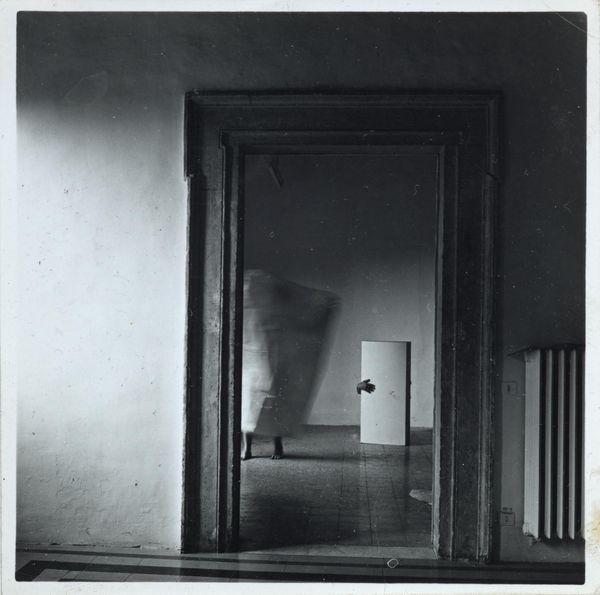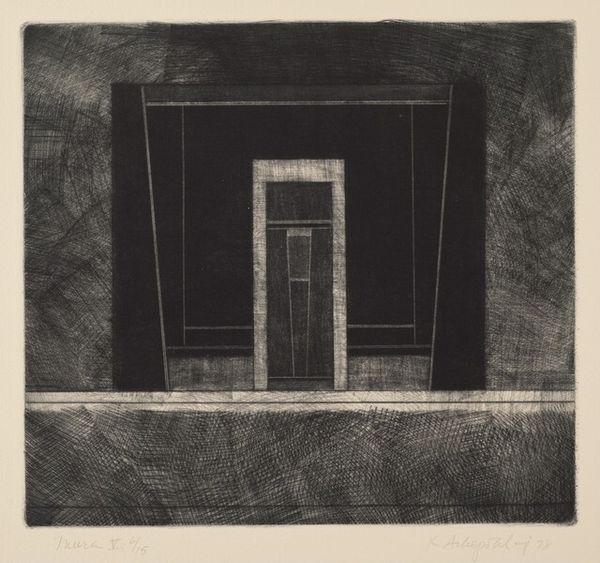
photography, gelatin-silver-print
#
monochromatic tone
#
sculpture
#
landscape
#
photography
#
geometric
#
gelatin-silver-print
#
abstraction
#
monochrome
Dimensions: overall (image): 15.72 x 15.72 cm (6 3/16 x 6 3/16 in.) sheet: 25.4 x 20.32 cm (10 x 8 in.) mat: 45.72 x 35.56 cm (18 x 14 in.)
Copyright: National Gallery of Art: CC0 1.0
Editor: This is "Ansley Park, Atlanta," a 1992 gelatin silver print by Harry Callahan. It’s striking how abstract he makes this scene feel; the dark, geometric shadows almost overwhelm the delicate trees. What stands out to you as you view it? Curator: I'm immediately drawn to the formal aspects you pointed out. The high contrast and sharp geometric lines imposed on the natural forms force us to consider the socio-political control asserted over landscapes, particularly in urban planning. Look how the shadow neatly bisects the organic space, carving it into zones. Do you think this division reflects a similar division within the community itself? Editor: That’s a powerful point, about the division. I hadn’t thought about it in terms of social space. It does feel quite stark; the contrast seems to amplify the starkness between light and shadow. Curator: Exactly. And consider the title "Ansley Park, Atlanta." It anchors the image in a specific location, laden with history and socio-economic context. Ansley Park, designed in the early 20th century, represents a very specific vision of urban living tied to class and social status. Callahan, by abstracting this landscape, invites us to question that vision. How does the photograph's stark composition reinforce or challenge the idealized image of suburban life? Editor: I guess it does reveal the artificiality of the scene. It feels so staged, even if it's natural. It makes me wonder about the choices involved in designing a space like that, and what that implies for who gets to experience it. Curator: Precisely. Callahan isn't just showing us a pretty scene; he's prompting us to analyze the underlying power dynamics that shape our environment and our perception of it. It is a potent statement on the manufactured landscapes we inhabit and how they reflect broader societal structures. Editor: This has made me look at the photo in a completely new way! I was stuck on the formal beauty, but now I see it as a critique. Curator: And that, I hope, illustrates the public role of art - not merely as decoration, but as a critical lens through which we examine the world.
Comments
No comments
Be the first to comment and join the conversation on the ultimate creative platform.
